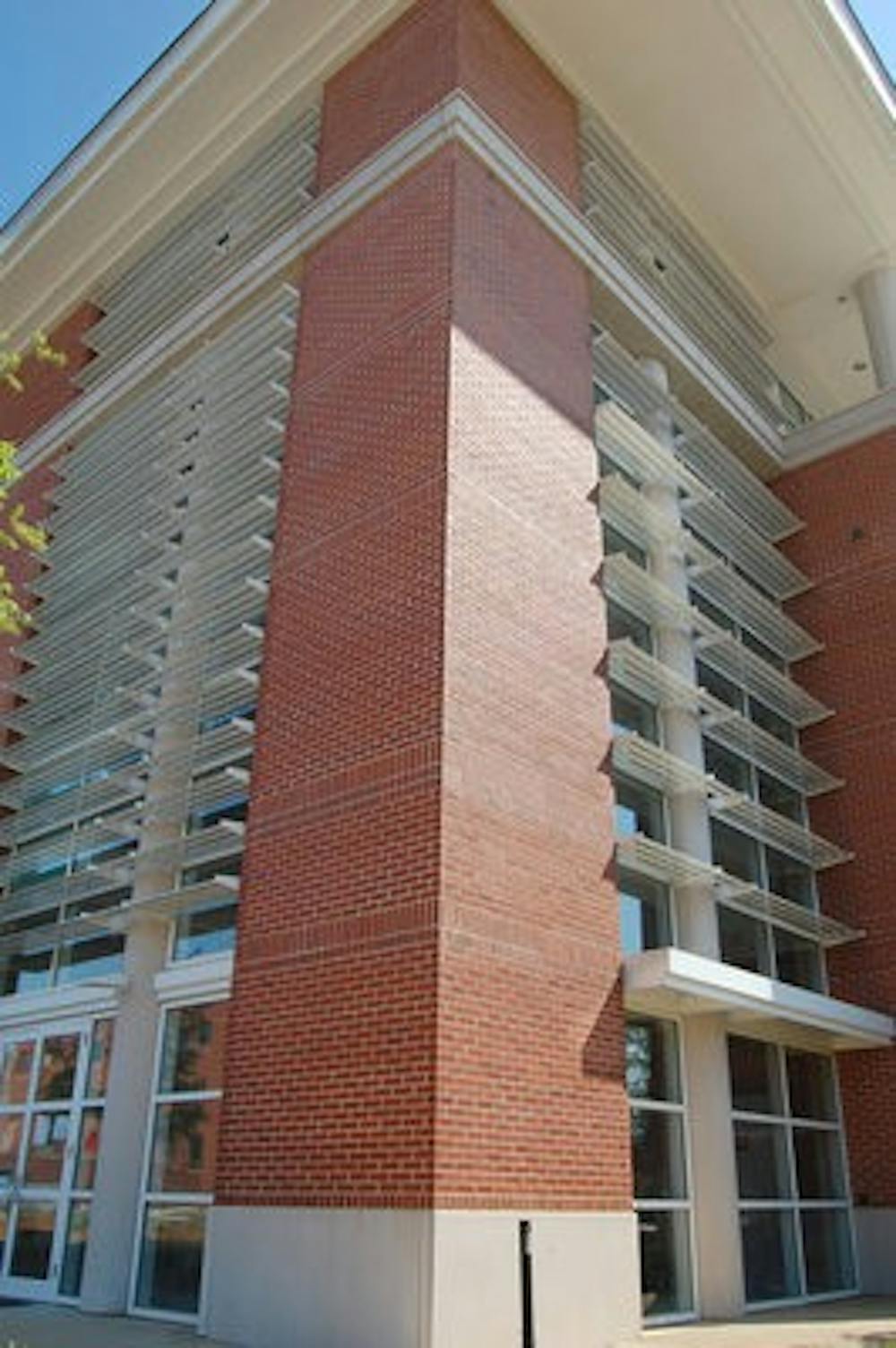Several buildings on campus take "going green" to a new level.
The Miller Gorrie Center and Building 570 in Auburn's Research Park are the only two LEED-certified buildings on campus, according to the U.S. Green Building Council website.
LEED, which stands for Leadership in Energy and Environmental Design, is a system of green building certification.
"It's a system of criteria that kind of rates the environmental performance of buildings, and through the design and construction process you earn points toward a LEED rating," said Darren Olsen, assistant professor of building science. "And there's a certain scale: If you earn a certain number of points you get a certain level of LEED rating. The kind of levels of certification are certified, silver, gold and platinum."
The Miller Gorrie Center, constructed in 2006, is used by building science students and was deliberately built to LEED standards, said Richard Burt, head of the McWhorter School of Building Science.
"I think us and Florida are the only schools in construction that have LEED-certified green buildings, so we're fairly unique," Burt said. "And we use it as a teaching tool as well."
Although the College of Building Science does not currently offer any classes on environmental building, there will be a class offered on sustainable construction next fall, Burt said.
In the meantime, the Auburn Green Builders, a student organization on campus, hosts workshops on green building several times a year, Burt said.
Burt said the building includes features such as natural daylight in all classrooms and low-maintenance landscaping.
According to John Weete, executive director of the Auburn Research Park, Building 570 contains offices for several businesses, including the University's Office of Technology Transfer. It was completed in 2008.
"There's a trend out there to construct buildings that are able to achieve LEED certification, and in university research parks that is a particular trend with the idea that companies now have more concern about the environment, and they prefer to locate it in buildings that have LEED certification," Weete said.
Weete said there is at least one more building in the research park that is attempting to achieve LEED certification.
According to Olsen, LEED candidates apply for certification through the USGBC and are judged in five different areas.
The first area is called sustainable sites, Olsen said.
"It has to do with where a building is located, if there's available alternative transportation near," Olsen said. "Part of those credits encourage you to locate a building in an urban type setting because they're trying to prevent suburban sprawl."
The second area is water efficiency which deals with how well buildings can reduce their water use.
The third area is energy and atmosphere, or how efficiently buildings use electricity and other energy.
The fourth area is materials and resources, which involves the materials used in the construction process.
"It's basically related to the materials that were used in the building--were they environmentally friendly materials?--and the other little part of it that's not really related to the materials used in the building is the waste that was generated during construction," Olsen said.
The fifth area is indoor environmental quality--how environmentally safe the inside of the building is.
"Part of one of the things that they're looking into is during construction, there's plans that you have to put in place to keep workers from smoking during construction--covering the ductwork as it's being installed to keep it clear and free of dust and so forth--after construction, limiting smoking or not allowing smoking inside the building," Olsen said.
"Included in that section of LEED are some regulations related to the types of paints and adhesives that are used in the building."
There are currently no state laws in place requiring buildings to pursue LEED certification. According to Olsen, the process is entirely voluntary.
However, there are certain benefits that may come from building to LEED standards.
"As far as environmental benefits, it reduces the operational costs of buildings," Olsen said.
By cutting down on electricity and water use, utility costs are reduced in LEED- certified buildings, Olsen said.
"I personally would say it's a superior form of construction," Burt said.
Do you like this story? The Plainsman doesn't accept money from tuition or student fees, and we don't charge a subscription fee. But you can donate to support The Plainsman.





